– Today we are pleased to introduce Michael Edmonds as part of the Wisconsin Historical Museum’s History Sandwiched In lecture series. Michael Edmonds is the Director of Programs and Outreach at the Wisconsin Historical Society. He is also the author of two award-winning books from the Wisconsin Historical Society Press, “Out of the Northwoods: The Many Lives of Paul Bunyan” and “Risking Everything: A Freedom Summer Reader.” Between 2006 and 2015, he wrote more than 500 “Odd Wisconsin” sketches for a syndicated weekly newspaper column, and he co-wrote “Warriors, Saints, and Scoundrels: Brief Portraits of Real People Who Shaped Wisconsin” based on those sketches. He has also written articles for the Wisconsin Magazine of History and other journals. Here today to discuss the construction of the Wisconsin State Capitol, please join me in welcoming Michael Edmonds. (applause)
– Thank you, Katie. And thank you for coming on this lovely day when you could be sitting outside. I want to begin by talking just for a minute about the Wisconsin Historical Society because they’re your host today, and the book I’m going to read from is published by the society. And you’re familiar with the museum that the society runs, but you may not know that we also operate a dozen historic sites that are archives, is one of the largest American history research centers in the country. We have archaeologists working all over the state, including in the lakes. Our library is the largest American history library in the nation. The press, which published this book and so many others out there in the gift shop, is the oldest publisher in Wisconsin. We have traveling exhibits that go all over the state, and talks like this are given all over the state. We serve teachers and we save buildings and help local historical societies.
So we’re active everywhere, not just here in Madison. And we do this because we think the past matters. History enriches and transforms people’s lives. That’s our mission statement. It does this in a couple of ways. First, history shows us who we are. This comes home really clearly in the novel “The Grapes of Wrath,” by John Steinbeck, where, I assume you have all seen the movie if you haven’t read the book recently, where the family’s heading for California and they can’t bring everything with them. So they’re leaving heirlooms in the dust in Oklahoma. And one of the kids says, “How will we know it’s us without our past?” How would you be you without the memories you have of your childhood and your grandparents and where you grew up?
A second thing history does is it helps us understand other people. Perhaps, more than every before, we tend to live in our own bubbles. And by looking at history, which you do upstairs here, you see how other people lived and have the ability to empathize. Finally, we think it’s important to do this because history inspires us. This was driven home to me a couple of years ago when our exhibit about the civil rights movement was traveling around the state and a middle school student came up to her teacher after looking at the exhibit and said, “I never knew my grandmother had to be so brave.” And I said, “Yes, that’s why we do what we do.”
Well, today, thanks for indulging me in that little bit of who we are. Today we’re going to talk about the Wisconsin Capitol, particularly its creation. And I’d like to set the stage for that with the broadest possible opening. The capitol, of course, is the seat of government. And so everything about the building has to do with government. But the first governor of Wisconsin was actually a king. This guy here, Louis XIV. When white people first came here, he governed Canada, including Wisconsin, spelled O-U-I-S. And nobody questioned his right to do that. In the 1600s, it was called the divine right of kings. Everybody agreed through right of birth people like him got to tell everybody else what to do. It was unquestioned common sense for centuries.
Until, that is, a few crazy visionaries in Philadelphia a hundred years later got a radical idea. They decided that the power to govern did not come down from on high. It was not the divine right of kings but that it rose up. When they wrote, “We hold these truths to be self-evident that all men are created equal, that they are endowed by their creator with certain unalienable rights. That among these are life, liberty, and the pursuit of happiness. And that to secure these rights governments are instituted among men, deriving their just powers from the consent of the government.”
So they turned the world on its head. Turned the world completely upside down by claiming that governing authority rises up, it doesn’t come down. Now, when they wrote those words in 1776 in Philadelphia, nobody in Wisconsin could have understood them because almost everybody here only spoke Ho-Chunk or Menominee or Ojibwe or Potawatomi. There were a few French-Canadian fur trappers at Green Bay.
In Prairie du Chien, they only spoke French. But over the next 50 years, what we think of today as Wisconsin began to fill up with English speakers who carried those words with them when they came west. This map, at the upper left is what Wisconsin territory looked like in 1836 when it was first set up as a government. As you can see, heres what we think of as Wisconsin today. You can see it extended all the way to the Missouri River in the west, in the south to the border of the state of Missouri, and to the north all the way to Canada.
Nobody really cared about 90% of it. It was only this little corner where there were Americans living. And here it is on a map from 1829, the Wisconsin River, the Mississippi, and you can see its dotted with lead mines. And if youve been coming to talks like this regularly, you know what the lead mining region was all about.
Madison was named the capital when the first legislature met at Belmont, out here near Platteville and had to choose where to put the capitol. How many of you know the story of James Doty and the capitol? Most of you? All right, so we wont bother to talk about it. This is the map he brought with him. He traded house lots in exchange for votes, and thats why were here in this city today instead of somewhere else.
That happened in 1836. In the next spring, in 1837, a construction crew walked from Milwaukee to this Isthmus where we stand, or you sit, and they started erecting this building, the first Capitol. It was in the middle of nowhere. There were no construction supplies. They had to saw all their own lumber. They had to quarry all their own stones for the foundation from over in Maple Bluff, float them over here.
And this building, which lasted only about 20 years, the first Capitol in Madison, was never very good. The floorboards shrunk so much when the building was heated that you could run your hand in between the floorboards. In the winter, it was so cold that the ice froze and legislators couldnt take notes and write.
It also was recognized by the 1850s as far too small and a fire trap. So the governor, in 1859, said we need to either improve it or replace it, and they, the legislature, decided to appropriate money for this building, which was built on the site of the Capitol across the street. As you can see, it was a much more grandiose structure. And it was the seat of all government offices through the second half of the 19th century.
In 1883, these two wings were built on the north and south ends in order to house more offices and more state workers. Remnants of it, including the iron fence, still turn up occasionally in antique shops around Madison. Although it had been equipped with the latest fire suppression equipment during the 1880s, it ultimately burned down. It had been surrounded with water pipes from the city, and inside the building in multiple places on each floor there were coiled up fire hoses. This is what it looked like inside. This is the assembly chamber, typical office. This is the only picture of inside the rotunda, which, as you can see, was smaller than the one we know today.
On the night of February 27, 1904, a gas jet, which was left burning like a nightlight for the security guards to use, ignited a newly varnished ceiling on the second floor. There were two security guards. So the one who discovered the fire ran to tell the second one, he ran and got one of those hoses, they came over to where the fire was burning, turned the valve, and nothing came out. It turned out that the hoses were hooked to a reservoir on Bascom Hill, the university’s water supply, and the university’s system had been drained during that day in order to clean it for maintenance, and there was not enough pressure to push water all the way down State Street and up the hill to the Capitol.
So they called the Madison Fire Department, the fire expanding the whole time, and the fire department came and tried to get access to the city’s water supply. No one was available at 4:00 in the morning who knew how to do that. The fire spread further. And by the time people began to get a handle on it, it was entirely out of control and lighting up the night sky.
I’ll read you a couple of paragraphs of descriptions here. 15-year-old Joseph Livermore looked out his attic window two blocks away, awakened by the fire alarms about 4:00 AM. He told an interviewer, “My brother and I popped out of bed, and as I dashed out, why there was my little vest pocket Kodak on the dresser there, and I stuck that in my hip pocket and went out and went up to the fire. I set my camera on the top step of a store and gave it a three-minute exposure.” It’s the only photograph taken. You’ve probably seen it. It’s in the book. I could have put it here.
And it was turned into this engraving by an unscrupulous person who conned the kid out of his negative and then sold these afterward. One of the people who responded first to the fire was then-governor Robert La Follette, who lived nearby. “He ran everywhere through the burning building,” wrote an eyewitness, “directing the work of rescue of valuable records and documents. He helped carry out paintings, furniture, the archives of state government until two citizens took him by the arm and dragged him out of the building. He was completely soaked from head to foot, but he couldn’t be put down. After changing into dry clothes, he ran back into the fire.”
Well, the fire burned, smoldered for the better part of a day. And when it was over, finally, the next morning, this is what the senate chamber looked like. This is a view of, another of the wings. About 80% of the building was destroyed. And La Follette wrote to a friend, a friend in Washington, “Yes, the old Capitol is sadly changed, and in a few years, it will be only a memory, for I have no doubt that the citizens of Wisconsin will insist on having an entirely new building put up in its stead. We need it, surely. Nevertheless, I shall regret to see it go, for, as you say, many cherished associations cling about it.”
Well, a bipartisan commission was put together to decide what to do. The first thing they had to do was tear down the ruined parts of the second Capitol. One wing of it was inhabitable. And offices were used in the north wing. But the rest of it had to be demolished. While that was going on, they envisioned what kind of a capitol they would want to be a tribute to this experiment in self-government that I started the talk with. They wanted to build a shrine to freedom and democracy. And also to the idea that freedom and democracy led to prosperity and abundance because most of the people who worked in this capitol commission were old enough to remember coming to Wisconsin and living in log cabins. They’d gone from nothing to being powerful affluent people who could make decisions about things like the state capitol.
So they sent out an RFP to the leading architectural firms, five architectural firms around the country, including that of George Post of New York who was perhaps the best-known architect in the country at the time. He had been president of the American Institute of Architects. And he sent in this elevation and plans, which as chosen as the design for the Capitol. Now, Post was in New York, this building had to be built here in Madison, and the commission, in probably the wisest thing that it did, hired this guy, Lew Porter, to superintend construction. How many of you have ever remodeled a bathroom, or maybe bought a house or built your own house? Okay, you know what can go wrong.
Well, Lew Porter, with his eyes wide open, decided he would take on the job of superintending the construction of the Capitol. His headaches were exponentially worse than yours with that bathroom. I say that the wisest thing they did was to hire him because he was incredibly meticulous, and the reason the Capitol looks the way that it does today and gives so much pleasure is because of his personal standards. A friend who recalled him working on the project years later wrote: “As he walked about observing what was going on, in his stoop-shoulder carriage of body and his slow, very cautious watching of what happened, it seemed nothing escaped his eyes. Many workmen told me that. That is, whatever the planned called for was carefully checked, and if the plan did not meet proper carrying out, that too was changed to fit.”
One day Porter looked at a railing in a stairwell that was supposed to be solid bronze, banged on it, asked for a hacksaw, and tore into it. It was not solid, and he had it taken off and sent back. There were more than 500 contractors who bid on 125 different types of jobs, like plumbing or painting and so forth. And for more than a decade, there were 25 to 40 of these contractors working on the job on any given day. It was the most complicated construction project ever attempted in the state. And Lew Porter was responsible for the success of every detail.
Luckily for us, he was very compulsive about details. And he worked very carefully to make sure everything was done according to plan. But he couldn’t escape from his responsibilities. Even when he took a day off to go sailing, the construction site loomed above him. When he went home at the end of the day to his house in Monona, his responsibilities stared down at him from across the lake.
Gradually, between 1906 and 1917, the building went up. This is the structure that was put up to facilitate erecting the dome. Here you see the dome going up. This is, I believe, the south wing. It’s being worked on. Here’s the north wing from the previous Capitol that remained intact, remember? I love that picture because it shows both. Now, Porter had to deal with more than just construction issues because government employees jockeyed for offices as the new wings went up. If you were working over here or in a rented space on the Square and you could get a brand new office in one of these, you tried to exercise all your political connections to do it.
The State Fire Marshal, the Superintendent of Public Instruction, and members of various boards all lobbied Porter for larger quarters. By 1913, he was being deluged with demands, and he lost all patience when the state bank examiner deviated from the project plan while trying to secure a new office. The bank commissioner’s office was scheduled to leave the old north wing for modest temporary offices elsewhere while a new permanent one was being built. Well, he refused to take the smaller temporary quarters claiming that the bank commissioner needed a vault. The vault was not in George Post’s plans. As he lobbied to get a vault in the new wing, he was just as stubborn as Lew Porter, and he camped out in his old office while the north wing came down around him. (laughter)
After consulting the Attorney General, Porter waited until his nemesis was briefly out of town and then ordered the corridor directly above the bank commissioner’s office to be dismantled. He scheduled the demolition to start after courts had closed for the day in order to prevent a restraining order. As lathe and plaster began falling around the bank commissioner’s staff, they quickly moved out their furniture and files, and by the time the commissioner himself returned to Madison, his office was gone.
Porter also had to deal with sensitive artists who were working on the building, with architects who felt their furnishings weren’t being executed correctly, with politicians, with all sorts of forces, and be both faithful to the plan and try to keep all those varying interests balanced. Now, the building went up with at least two deaths. This is the construction crew that built the dome, and one of the deaths happened while the dome was going up.
An eyewitness who was a friend of Porter actually wrote years afterward to a friend. “As you may know, when the steelwork of a building has reached to a height, there is or was a custom of placing an American flag on the highest point. This was done on the State Capitol, and that, of course, before the statue was placed high on the dome. This flag-raising was done shortly before the Fourth of July. During the Fourth of July holiday, one of the workmen, who was celebrating and filled himself to a good capacity with liquor, against much warning climbed inside to the innermost point of the dome, which at that time was far from completion. That is, the stonework, the marble, and the painting. When well up, he lost his balance and fell to the lower floor. On route down, his body snapped across supporting rods one-inch and one-and-a-half-inch thick. So you can see the speed going down accepted no interference. Naturally, he never lived to tell the tale, and before his final stop he was a goner.”
The other death that occurred during construction had to do with the sculpture that we see on the outside of the Capitol and is one of its main features. Work was running behind schedule in the fall of 1909 because the Vermont granite supplier hadn’t delivered stone on time. The head sculptor, Karl Bitter, who designed statues to go above the entrance, these statues in the pediment there, was impatient to get them finished before winter, but they couldn’t be put in place until the base underneath them was installed. He typically had assistants do rough carving on the ground, you see some of it in the upper left there, and then he personally completed the work after the statues were lifted to their final locations.
Installation of the statue’s base was carried out by a foreman named Dan Logan, called a man always in a hurry by his friend William Van Dusen. On this day, Logan was in such a hurry that he ordered his crew to work on Sunday, October 24 to get the work back on schedule. His supervisor knew his habits and cautioned him, “Dan, listen. You go slow erecting that pediment,” the big triangular piece here. “Bank every stone with due care before you attempt to pile the next stone on top, and, remember, each must balance the following stone by stone and bank each securely. About three o’clock that afternoon, Logan was working 80 feet above the Square with Frank Bliss, ‘a boy who grew up with me,’ Van Dusen recalled, “And who was at that time a young man helping Logan with the stonework and the banking of each stone was it went into place.”
They had built up the base of the pediment to support the statues and were laying a four-ton piece of granite when the stone beneath it cracked, sending the whole pile cascading down to the street. “Frank saw the beginning of the parting of what was already in place and jumped to safety, but he turned and saw Dan go down with that massive stone, statues and all. Logan was killed instantly, but the rest of his crew escaped unharmed.”
George Post was well-connected in eastern artistic circles, cultural circles, and he hired the nation’s best painters and sculptors to work on our Capitol. You can see some of the work here up close. And if you look at it, you can see, think of it, it’s 1906 or 1910 and the artistic world is being turned upside down by people like Pablo Picasso. In architecture, Frank Lloyd Wright has challenged the way things have been done for decades. But the people who built our Capitol didn’t want anything to do with modernism. They wanted the building to look backwards in time.
And so these paintings could have been done in 1880 as easily as 1910. One of the painters, Kenyon Cox, offended Senator Henry Rothe of Dodge County by painting a naked sea nymph in a senate chamber mural. Rothe thought his was a high degree inappropriate and moved that mural be taken down. His colleagues disagreed and his motion was defeated. So next time you’re at the Capitol, go on over and see if you can find the naked sea nymph up there. Other legislators were opposed to the cost that such an opulent building would require. Post’s fee, the architect’s fee, was calculated as a percentage of the total project cost, and one senator hinted there was a direct relationship between the architect’s specifications for expensive materials and his bank account.
The Senator Marsh tried to prevent the state from spending enough money to realize Post’s vision, but his proposal was ultimately rejected by the senate in a close vote. And I think we would all agree a hundred years later that if you take away all those different kinds of gorgeous marble and you take away the paintings, you don’t really have a shrine to democracy and freedom at all. Well, when they were done, the Capitol satisfied everyone’s dream for a splendid building. In 1906, the west wing was demolished, and in 1907, the first foundation was laid for a new west wing. Construction went on for more than a decade until, in the summer of 1917, the north wing was finished and the landscaping was laid out.
There was never a formal opening of the building or any kind of ceremonial observation that the building was now done because the US had just entered World War I and people were very concerned about their husbands and their sons being sent to die in the trenches of France. No one was in a celebratory mood. So the building was never formally opened until 1965, when Governor Knowles held a ceremony to mark it. George Post, the architect, didn’t live to see his masterpiece completed. He died in 1913 and his sons took over. Lew Porter literally worked himself to death, passing away at age 56 from hypertension and kidney disease just a few months after the building was finished. He’s buried over in Forest Hill Cemetery, where everyone who admires the Capitol should go pay a grateful visit.
If you enjoyed those stories, the book, which you can get out in the lobby, is filled with nothing but stories. We already have enough books about the Capitol’s architecture, and this was a chance to tell the stories of some of the people who have worked in or built the Capitol. On October 3, I’ll be back and I’ll pick up in 1917 and bring it much more up to date with stories about people in Wisconsin politics who created, who worked in the monument we have across the street. So, thanks. (applause)
Search University Place Episodes
Related Stories from PBS Wisconsin's Blog

Donate to sign up. Activate and sign in to Passport. It's that easy to help PBS Wisconsin serve your community through media that educates, inspires, and entertains.
Make your membership gift today
Only for new users: Activate Passport using your code or email address
Already a member?
Look up my account
Need some help? Go to FAQ or visit PBS Passport Help
Need help accessing PBS Wisconsin anywhere?

Online Access | Platform & Device Access | Cable or Satellite Access | Over-The-Air Access
Visit Access Guide
Need help accessing PBS Wisconsin anywhere?

Visit Our
Live TV Access Guide
Online AccessPlatform & Device Access
Cable or Satellite Access
Over-The-Air Access
Visit Access Guide
 Passport
Passport





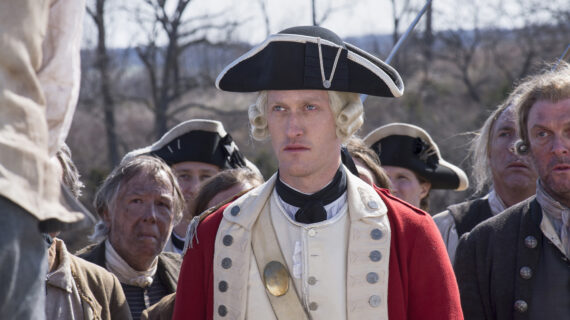

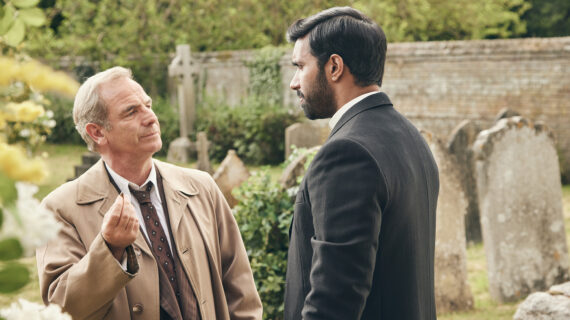
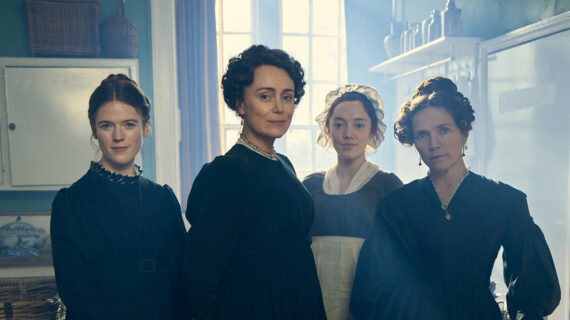
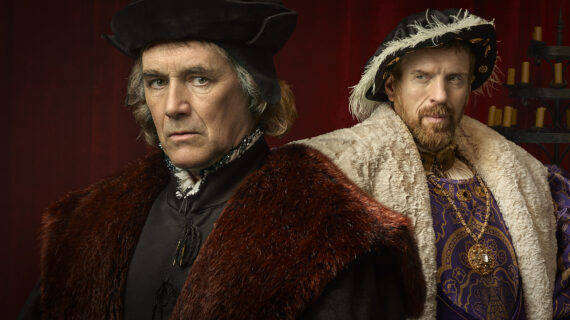
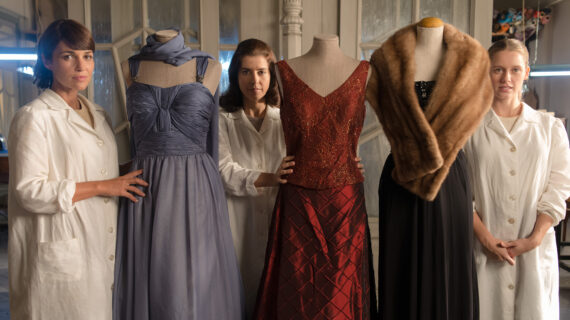
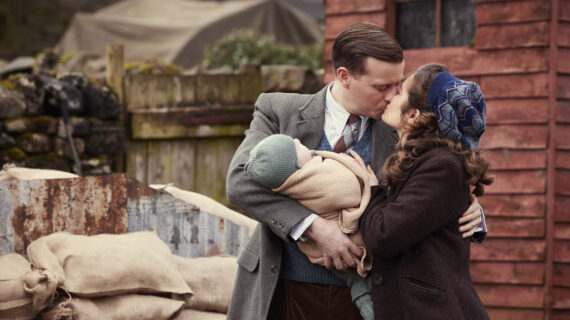
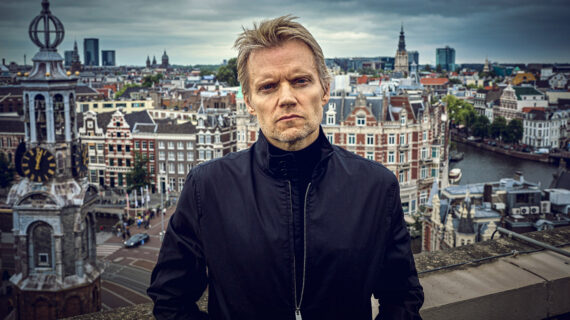

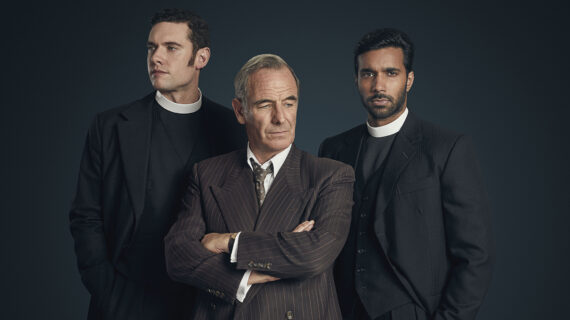
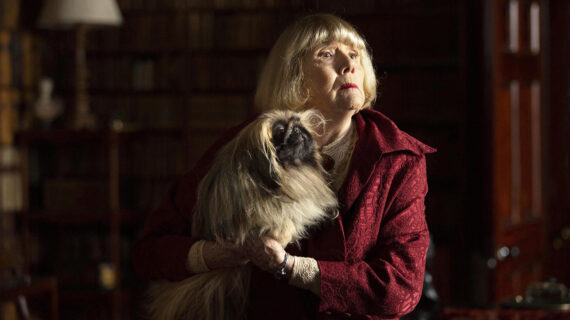

Follow Us